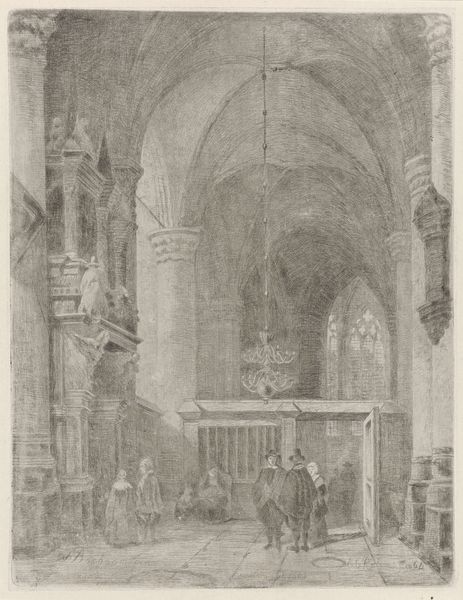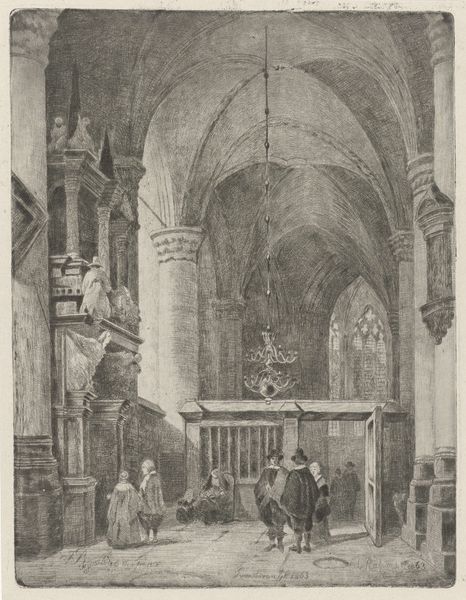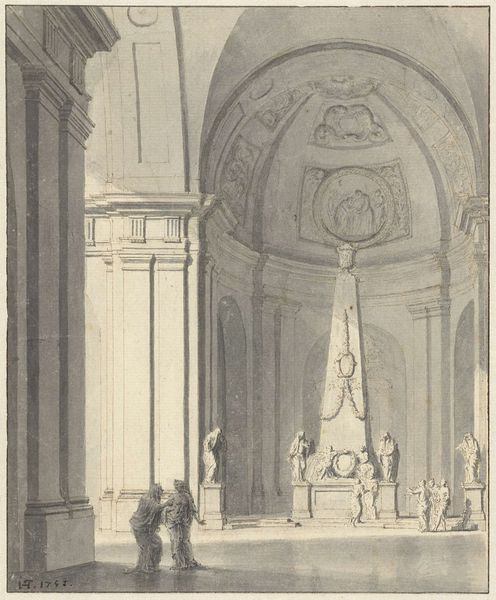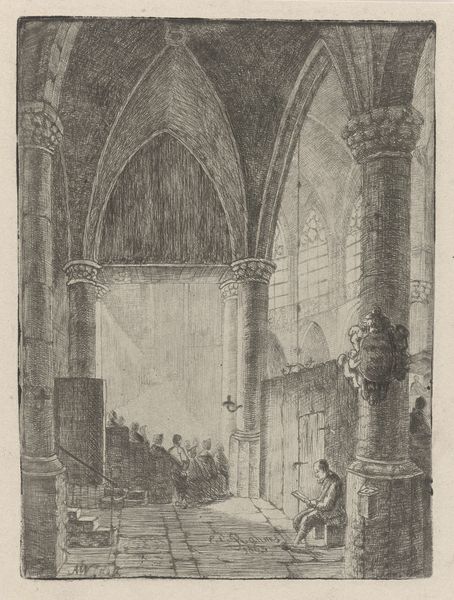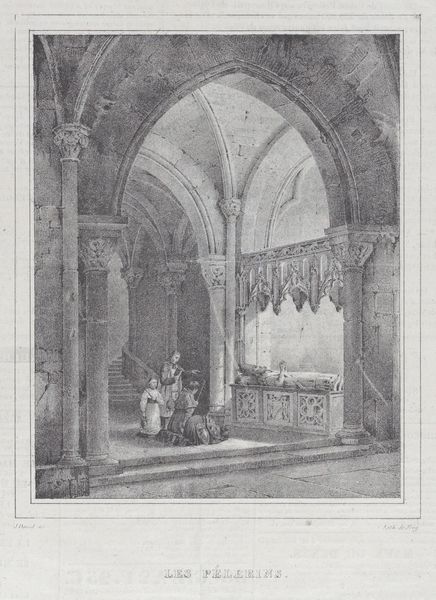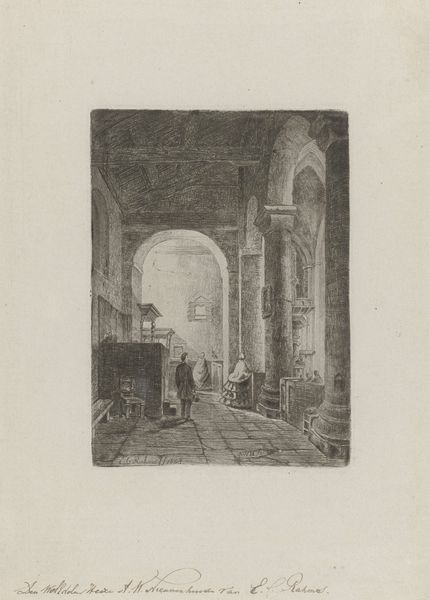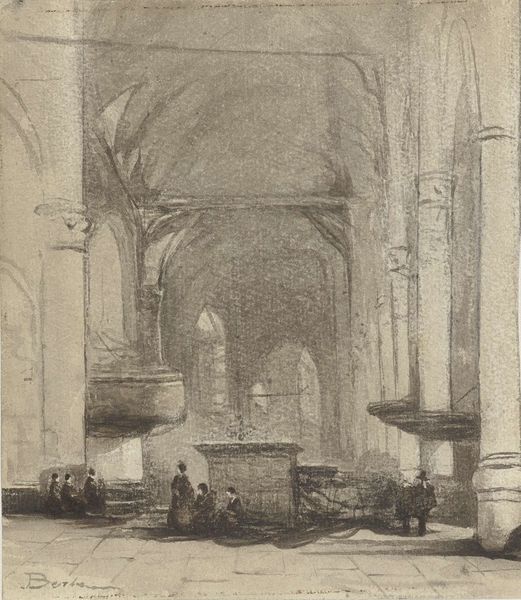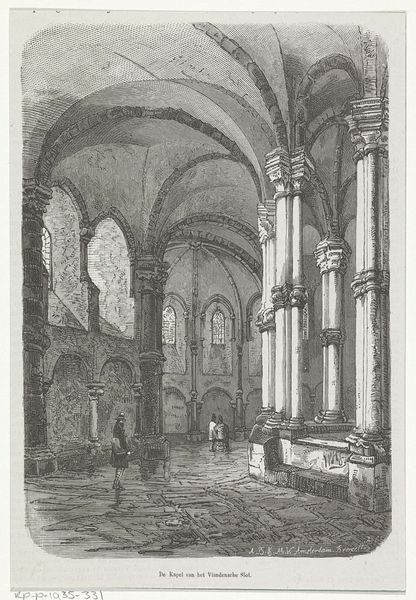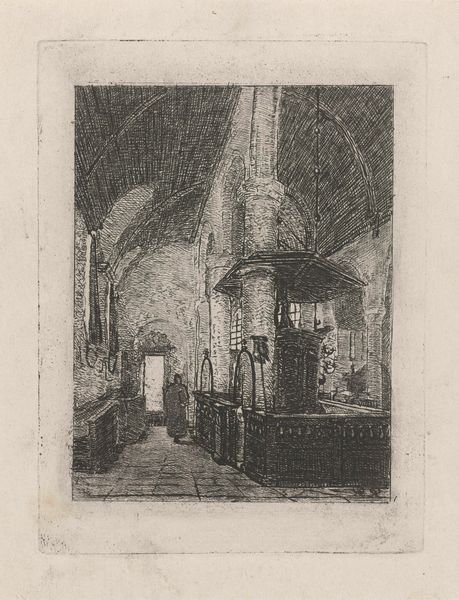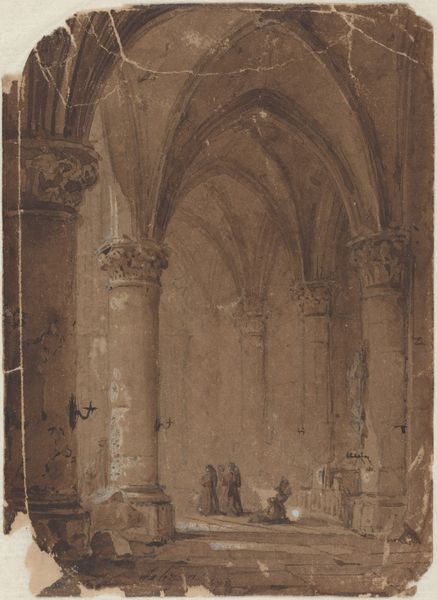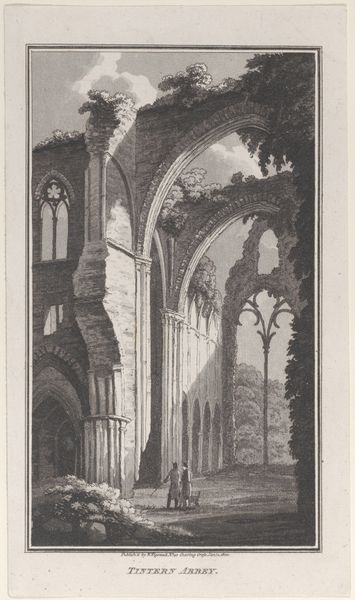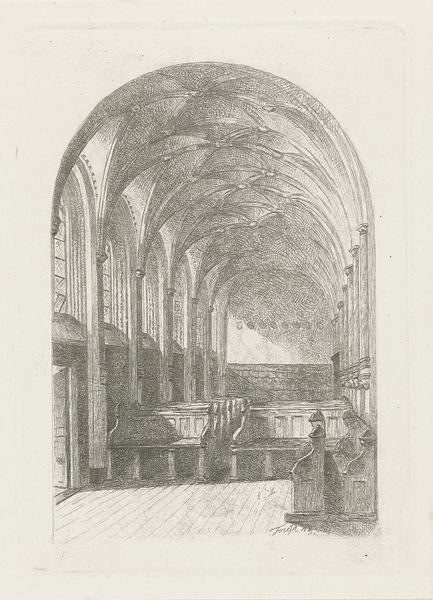
print, engraving, architecture
#
medieval
# print
#
landscape
#
form
#
19th century
#
line
#
history-painting
#
engraving
#
architecture
#
realism
Dimensions: height 114 mm, width 91 mm
Copyright: Rijks Museum: Open Domain
Editor: Here we have Johann Wilhelm Kaiser’s "Dom van Keulen," an engraving from 1848, depicting the Cologne Cathedral. The soaring lines and immense scale create this very solemn, almost reverential mood. What historical context might have shaped this portrayal? Curator: Well, remember that 19th-century art often grapples with national identity and historical narratives. The Cologne Cathedral, begun in the medieval period but left unfinished for centuries, became a symbol of German national pride, particularly during the Romantic era. Do you think this print serves more than just a visual record? Editor: Definitely, it feels like it’s contributing to the cathedral's symbolic importance. But how would prints like this circulate and contribute to the cathedral’s, or Germany’s, image? Curator: Think about it – engravings are easily reproducible. Prints like this were widely distributed, making the cathedral visible even to those who couldn’t travel to Cologne. They bolstered a shared cultural heritage. The visual language - that intense realism mixed with a romantic sensibility- also shaped public perception, idealizing the nation’s past and reinforcing its identity. Note that tiny people are depicted at the foot of massive columns. What do you make of this conscious compositional choice? Editor: It definitely emphasizes the scale and grandeur of the architecture but, perhaps more subtly, reinforces ideas about individual and nation; past and present. This wasn't just about showing the building; it was about using it. Curator: Exactly. It's about the *use* of art in constructing collective memory and national narratives. This image participated in creating a certain image of Germany through its history and monumental achievements. Editor: I see it much clearer now, it’s not *just* a pretty picture. Curator: Precisely. And hopefully you also appreciate Kaiser's understanding of political impact a widely circulated image can produce.
Comments
No comments
Be the first to comment and join the conversation on the ultimate creative platform.
